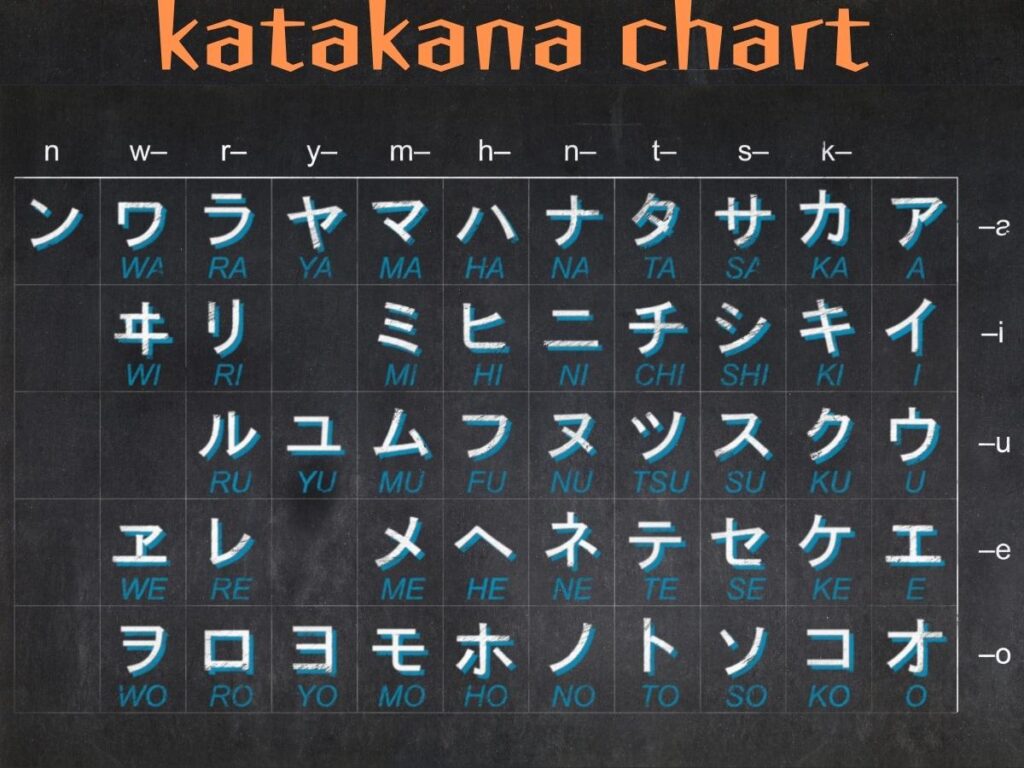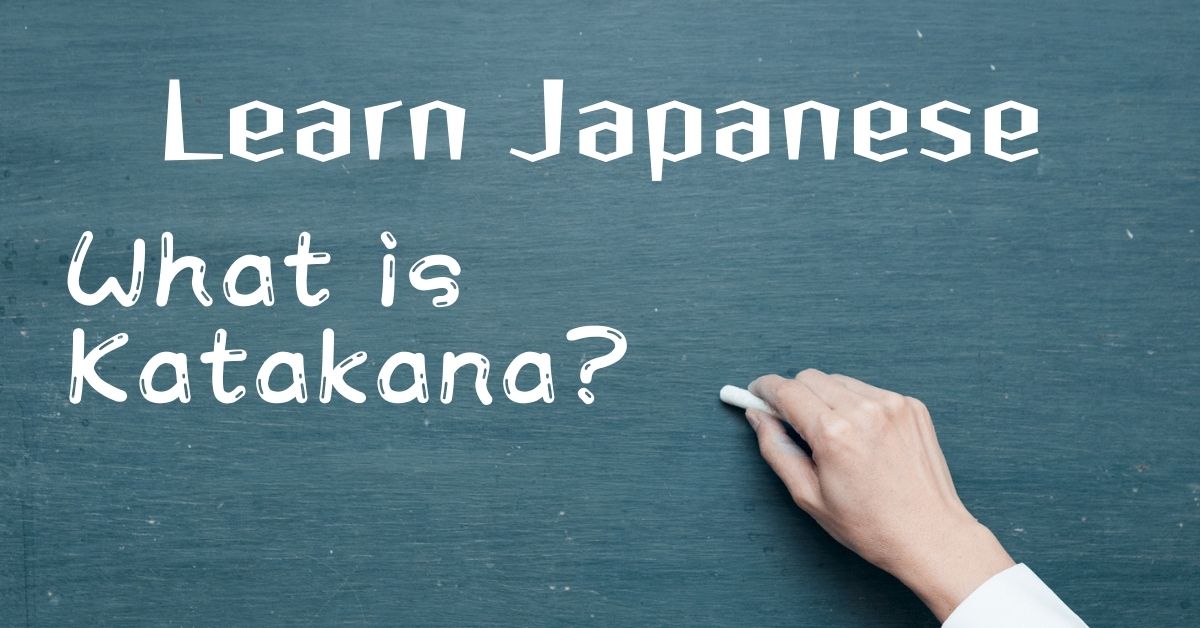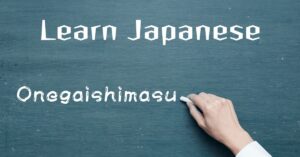Katakana (カタカナ) is one of the three writing systems used in the Japanese language, alongside Hiragana and Kanji.
Katakana (pronounced kah-tah-kah-nah) and Hiragana, the first two Japanese alphabets, originated around the 9th century when the Japanese people developed their own writing system that was different from Kanji, which was borrowed from Chinese. Together, they are called Kana. When looking at Japanese script, it is easy to differentiate Katakana and Hiragana from the more complicated Kanji, and together, the three complete the Japanese writing system.
Introduction to Katakana
Katakana is a syllabary script in Japanese, consisting of 46 basic characters. It is primarily used for specific types of words and expressions. While Hiragana is used for native Japanese words and grammatical elements, and Kanji represents complex meanings through characters borrowed from Chinese, Katakana has its unique applications.
Also Read

Katakana, like Hiragana, is an alphabet that is made up of forty-six letters, starting with the vowels A, I, U, E, and O.
Each grouping is the same as in Hiragana and follows the same pronunciation patterns. Many Katakana letters also look very similar to Hiragana letters but are sharper and have fewer curves. O, for instance, is a similar shape but written with straight lines. Therefore, if you have already mastered Hiragana, it is much easier to learn Katakana afterward.
What Is Katakana Mainly Used For?
Katakana is usually used in writing for words that have been borrowed from other languages, such as BOTORU (bottle), ROKKA (locker), KOHII (coffee), TE-BURU (table), SUPUUN (spoon), and many more. Most people learn Hiragana, the first alphabet, before Katakana, as Hiragana is more useful and is used more often, which makes learning Katakana a whole lot easier.
In addition to borrowing words from other languages, Katakana is used for names and countries that can’t be used in Kanji. Western names such as Louise, James, Mark, Lauren, etc., are written in Katakana and made to sound as similar to the original name as possible; for instance, Lauren would be RO-REN.
Here the primary uses of Katakana:
1. Foreign Loanwords and Names
One of the most prominent uses of Katakana is to write gairaigo (外来語), which are foreign loanwords adopted into the Japanese language. These words are typically borrowed from English and other languages, often with slight modifications to fit Japanese phonetics.
- Examples:
- コンピュータ (konpyūta) – Computer
- テレビ (terebi) – Television
- ハンバーガー (hanbāgā) – Hamburger
Additionally, Katakana is used for foreign names, both personal and place names, ensuring clarity and distinction from native Japanese terms.
- Examples:
- マイケル (Maikeru) – Michael
- ニューヨーク (Nyūyōku) – New York
2. Onomatopoeia and Mimetic Words
Katakana is often employed to represent onomatopoeia (擬音語, giongo) and mimetic words (擬態語, gitaigo) in Japanese. These words mimic sounds, actions, or states, adding vividness and expressiveness to the language.
- Examples:
- ドキドキ (dokidoki) – The sound of a heartbeat or excitement
- ピカピカ (pikapika) – Shiny or sparkling
- ガタガタ (gatagata) – Rattling or shaking
3. Emphasis and Stylistic Purposes
Similar to italics or bold in English, Katakana can be used to emphasize certain words within a sentence. This stylistic choice helps highlight important terms or add a distinct tone to the text.
- Example:
- これはスーパーおいしいケーキです。
- Kore wa sūpā oishii kēki desu.
- This is a super delicious cake.
- これはスーパーおいしいケーキです。
4. Technical and Scientific Terms
Katakana is utilized for writing technical and scientific terms, including names of plants, animals, minerals, and specialized vocabulary that may not have native Japanese equivalents.
- Examples:
- ウイルス (uirusu) – Virus
- ダイオウイカ (daiouika) – Giant squid
- アルミニウム (aruminiumu) – Aluminum
5. Company and Brand Names
Many company names and brand names in Japan are written in Katakana to give them a modern and international flair. This usage helps brands stand out and makes them easily recognizable.
- Examples:
- ソニー (Sonī) – Sony
- ユニクロ (Yunikuro) – Uniqlo
- スターバックス (Sutābakkusu) – Starbucks
6. Foreign Places and Geographical Names
Katakana is used for foreign geographical names, ensuring that locations outside Japan are clearly distinguished in written text.
- Examples:
- パリ (Pari) – Paris
- シドニー (Shidonī) – Sydney
- ロンドン (Rondon) – London
7. Scientific and Technical Writing
In academic and technical writing, Katakana is employed to denote specific terminology, especially in fields like biology, chemistry, and technology. This usage maintains consistency and precision in scientific communication.
- Examples:
- ゲノム (genomu) – Genome
- ナノテクノロジー (nanotekunorojī) – Nanotechnology
- バイオテクノロジー (baiotekunorojī) – Biotechnology
8. Highlighting and Visual Appeal
Katakana can be used to add visual variety to written Japanese, making texts more engaging and easier to navigate. This is particularly useful in advertising, manga, and graphic design, where visual impact is crucial.
- Example:
- ワクワクする冒険 (wakuwaku suru bōken) – An exciting adventure
Katakana is very useful for a foreigner visiting Japan, as it is not only used for names but also for some advertising, foreign words, and countries that can’t be written in Kanji – AMERIKA or KANADA, for example.
Once you have Hiragana and Katakana comfortably under your belt, you can make a start with Kanji and start to explore Japanese sentences, grammar structure, and phrases. With Hiragana and Katakana, you will find that learning to pronounce Japanese words is easy! Learning Japanese is an exciting and rewarding experience that many people around the world enjoy. Why don’t you try it?













